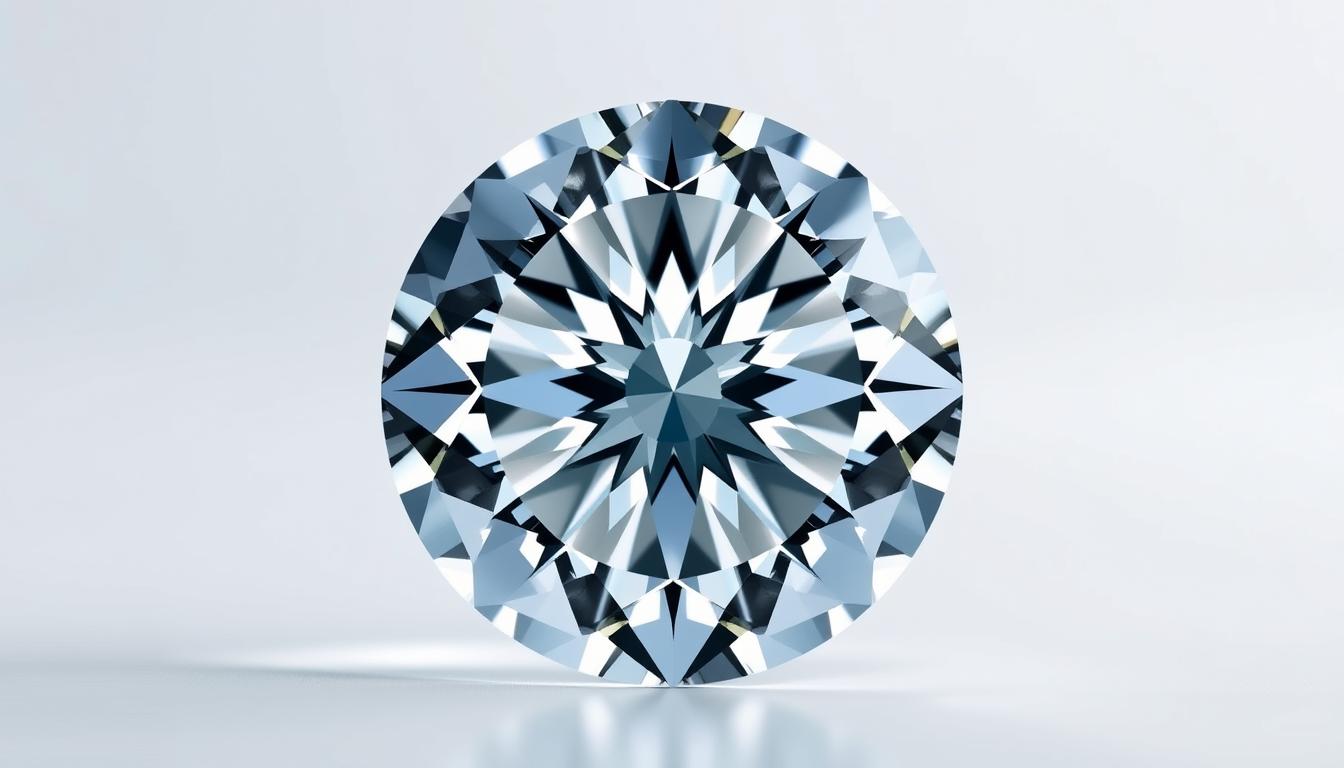Imagine a diamond that embodies the pinnacle of precision and beauty, a true marvel of craftsmanship. The Hearts and Arrows diamond is a round brilliant cut that showcases an intricate pattern of 8 hearts and 8 arrows when viewed through a special tool, symbolizing precision and symmetry.
These exceptional diamonds make up less than 1% of all cut diamonds in the market, making them a rare and exclusive choice. The unique hearts and arrows pattern is not just visually stunning but also indicates superior light performance and optical symmetry. Understanding the characteristics of a true Hearts and Arrows diamond is crucial in determining its value and whether the premium price is justified.
As we delve into the world of Hearts and Arrows diamonds, we’ll explore their history, the precision involved in their cut, and what makes them so special, helping you make an informed decision.
What Are Hearts and Arrows Diamonds?
The Hearts and Arrows cut is a specialized round brilliant cut diamond that exhibits a distinct pattern. This unique diamond cut has gained popularity for its precise craftsmanship and exceptional visual appeal.
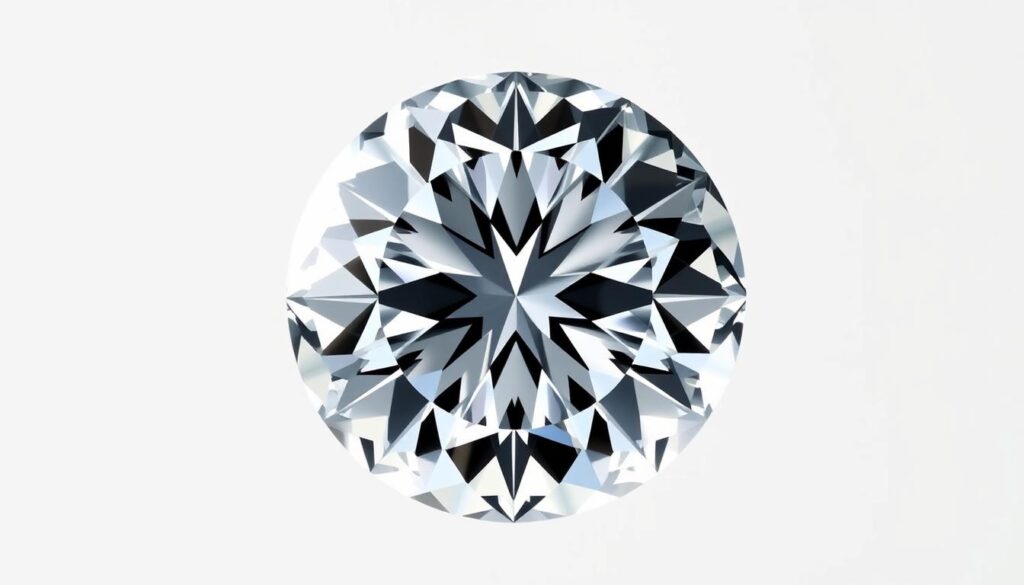
The Definition and Origin of Hearts and Arrows
The Hearts and Arrows diamond cut originated in Japan during the 1980s, developed by master diamond cutters who built upon the proportions established by Marcel Tolkowsky in 1919. This cut is characterized by its precise alignment of 57 facets in the round brilliant cut diamond, creating a unique optical phenomenon.
The Hearts and Arrows cut features a perfect pattern of 8 symmetrical hearts when viewed from the pavilion and 8 arrows when viewed from the crown, requiring extraordinary precision in the cutting process.
How Hearts and Arrows Patterns Form
The pattern in Hearts and Arrows diamonds is not a physical engraving but an optical phenomenon created by the precise alignment of facets. The creation of a true Hearts and Arrows pattern demands extreme precision in cutting, with facets that must be perfectly aligned at specific angles and proportions.
The Hearts and Arrows Scope
A specialized tool called the Hearts and Arrows scope, developed by Kinsaku Yamashita in 1990, is used to observe and evaluate the pattern’s quality and symmetry. The Hearts & Arrows Scope analyzes the optical symmetry of a diamond, showing how precise the angles and proportions of a diamond are cut, which exhibits the level of craftsmanship.
The optical symmetry in these diamonds creates exceptional light performance, with maximized brilliance, fire, and scintillation that exceeds typical excellent-cut diamonds.
The Anatomy of a Perfect Hearts and Arrows Cut
The anatomy of a Hearts and Arrows diamond cut is a complex interplay of various factors. A perfect Hearts and Arrows pattern depends on the precise calibration of several critical elements.
Critical Factors Affecting the Hearts and Arrows Pattern
The formation of a Hearts and Arrows pattern is influenced by five key factors: pavilion angle, crown angle, table size, lower girdle length, and star facet length. Each of these elements plays a crucial role in creating the desired pattern.
Pavilion and Crown Angles
The pavilion angle is particularly important as it affects light reflection. An optimal angle of around 40.8 degrees is ideal, as angles exceeding 41 degrees can cause the arrow shafts to fade. The crown angle must complement the pavilion angle to achieve a solid arrow pattern.
Table Size and Facet Proportions
Table size impacts both the hearts and arrows patterns. An optimal table size creates properly rounded heart shoulders and a balanced central reflection in the crown view. Facet proportions are also crucial, as they influence the overall appearance of the diamond.
Lower Girdle Length and Star Facets
Lower girdle facets are fundamental to the formation of hearts and arrows. Their length determines the thickness of arrows and the spacing between hearts. Star facets act as hot spots, contributing to the diamond’s fire and dispersion of light.
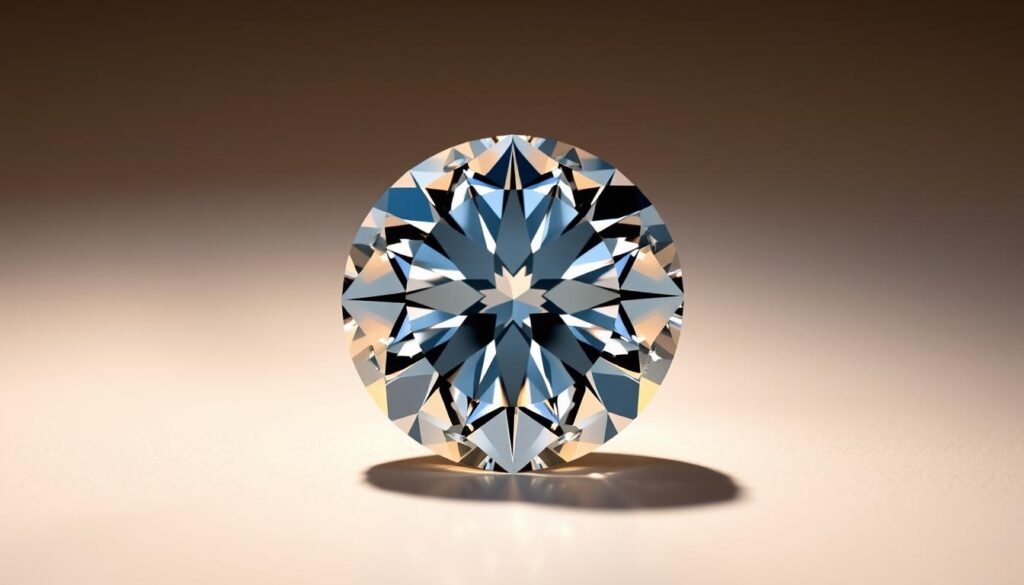
Evaluating Hearts and Arrows Quality
When evaluating the quality of a Hearts and Arrows diamond, several factors come into play. The hearts should be uniform in shape and size, with clear separation between hearts and arrowheads.
Perfect Hearts: What to Look For
Perfect hearts display uniform shape and size across all eight hearts. There should be clear separation between hearts and arrowheads, with no clefts or distortions.
Perfect Arrows: Signs of Precision
Perfect arrows should display symmetrical alignment, with arrow heads and shafts precisely aligned and consistent thickness throughout all eight arrows. Facet yaw or uneven polishing can be detected through distorted heart images, indicating a flaw in cutting precision.
Hearts and Arrows Diamonds: Value and Performance
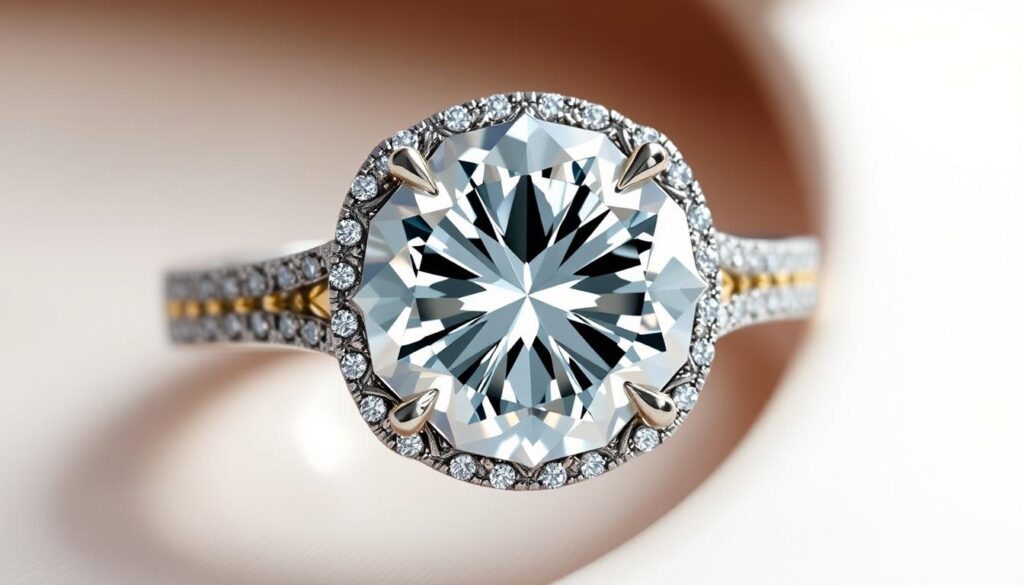
The allure of Hearts and Arrows diamonds lies in their intricate pattern and superior light performance, justifying their premium in the market. These diamonds are cut to exacting standards, resulting in a captivating visual effect that distinguishes them from other diamond cuts.
Price Premium: Is It Worth It?
The price premium associated with Hearts and Arrows diamonds can range from 10-35% more than excellent-cut diamonds without the pattern. Luxury brands like Hearts on Fire may charge even higher premiums, sometimes exceeding 50%. For instance, a 1.0-carat, G-H VS-SI1 diamond at Hearts on Fire could cost around $11,600, whereas a similar True Hearts™ cut diamond from James Allen might cost $6,190 for an H color SI1 or $9,850 for a G color VS1.
Light Performance and Visual Appeal
The superior light performance of Hearts and Arrows diamonds is characterized by exceptional brilliance, fire, and scintillation. This creates a visual impact that many find justifies the premium associated with these diamonds. The precise cut ensures that the diamond interacts with light in a way that maximizes its beauty and appeal.
Lab-Created Hearts and Arrows Diamonds
Lab-created Hearts and Arrows diamonds offer a more affordable alternative while maintaining the same optical properties and pattern as their natural counterparts. These lab-grown diamonds provide ethical and environmental advantages, allowing buyers to potentially purchase a larger stone or higher color and clarity grades for the same budget.
When comparing different retailers, price variations for Hearts and Arrows diamonds can be substantial. James Allen’s True Hearts™ collection, for example, offers better value than specialty retailers like Hearts on Fire. The value proposition of Hearts and Arrows diamonds extends beyond aesthetics to include the romantic symbolism of Cupid’s hearts and arrows, adding sentimental appeal for engagement rings.
Buying Guide: Finding Your Perfect Hearts and Arrows Diamond
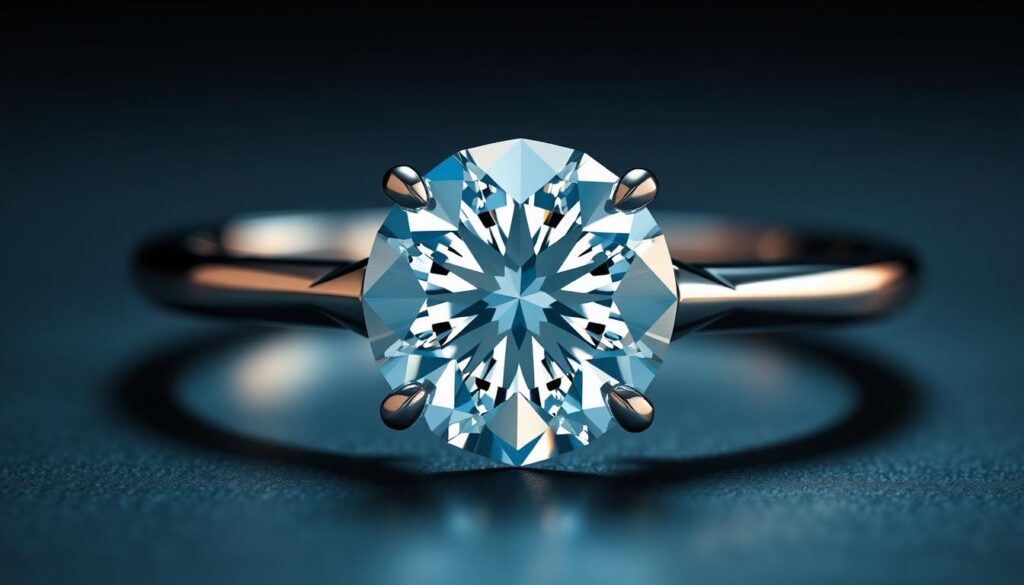
When searching for the perfect Hearts and Arrows diamond, it’s crucial to know where to look. If you’re concerned about getting a top-quality Hearts and Arrows diamond, consider retailers like Brian Gavin and Whiteflash, known for their precision cutting and stunning performance.
For a more budget-friendly option without compromising on the Hearts and Arrows designation, James Allen is a great choice. Their True Hearts™ collection features diamonds with excellent performance at lower prices, especially for diamonds one carat and above.
To ensure you’re purchasing a high-quality Hearts and Arrows diamond, prioritize vendors that:
- Specialize in precision-cut diamonds and provide detailed images or videos showing the hearts and arrows pattern from multiple angles.
- Offer certification from reputable gemological laboratories that evaluate and grade the Hearts and Arrows pattern.
- Use specialized tools like the Hearts and Arrows scope, ASET scope, or Idealscope to verify light performance and pattern quality.
For the best value, compare diamonds with identical specifications across different retailers, as pricing can vary significantly. Lab-grown Hearts and Arrows diamonds are also an excellent alternative, offering identical optical properties at a 30-40% discount compared to natural diamonds.
When making your final decision, consider the setting style carefully, as certain designs may obscure the arrows pattern. Remember, while the Hearts and Arrows pattern is beautiful, it’s the overall light performance that matters most for day-to-day wear and visual impact.
